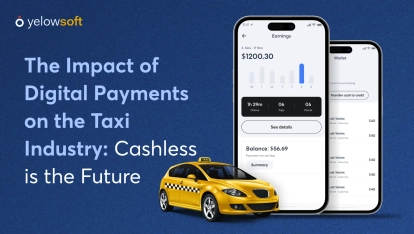No matter whether you are an individual or providing the car rental services, the hefty sum spent on the car repairs or the sudden case of the car malfunctioning is annoying to both. That’s where most of us cross the fingers to not get stuck with any of the case. Alas! It’s impossible. But, a system that’s capable of detecting the small issues or glitches before they occur or occurred can be life-saving for the drivers. This system is famously referred as on-board diagnostic (OBD).

Let’s understand OBD in a nutshell:
The on-board diagnostic is an intelligent system where different types of the sensors are integrated into the vital areas of the vehicle that monitor the performance and report the system whether those areas are working according to the designed specifications of the vehicle or not. When any differences are found, the sensors trigger a warning light on the vehicle’s dashboard, hinting the area need to be repaired or addressed off the bat.
The several diagnostic codes are stored in the system which is reflected on the dashboard panel, but they are different for various types of errors. To eliminate the confusion, the mechanics have the OBD port at their end, which when connected to the dashboard, diagnosing the problem by reading the codes at earliest becomes possible and thus, solving many taxi booking solution’s problems.
The OBD system with vehicle’s self-diagnostic and reporting capability make its way in the California market in 1991 where the data link connectors and their positions are not standardized. In 1996, OBD-II regulation was mandated to be fully implemented in all the cars manufactured and sold in the USA. Presently, all types of the passenger cars, light-duty trucks and medium-duty vehicles, and engines have OBD-II system integrated for high emission, lesser economy, low-performance indication, and hundreds of small issues.
The on-boarding diagnostic software offers a ton of benefits to the car rental service providers and improves the fleet management system. Here are the reasons you should install OBD tracking units in order to improve the fleet operations and fuel up the savings:
1. Inexpensive option as opposed to GPS tracking software
With the implementation of the OBD-ll system in the fleet management software, regardless the size of fleet business, you can manage fleet vehicle maintenance and diagnose fleet vehicle engine remotely alongside tracking fuel economy, managing drivers and generating various reports from the comfort of the couch.
The OBD-II telematics solution is great in the sense of more saving and cost reduction over the next few years when compared with traditional GPS system for fleet management. Getting extra benefits without spending a bundle makes OBD-II a perfect fit for the automotive business.
2. Enhance fleet and driver’s safety
Tracking vehicle’s safety and driver performance and behavior patterns are all-imperative to mitigate the risks of rapid acceleration, speeding or aggressive braking which in future become the business liability. The fleet management software with OBD-II unit monitors and create a report on the driver performance, and also design a safety profile for each driver which works as a standard for them individually.
Moreover, when the fleets equipped with active vehicle monitoring and driver safety policies, the likelihood of getting insurance at discounted rates become possible.
3. Early Diagnosing of malfunctioning becomes handy
Detecting the small problems before they start showcasing the symptoms is nearly impossible for the drivers to find out. Sometimes, a little delay in fixing the issues make the problem complex and a big sum of dollars have to be spent on the vehicles.
Here, OBD-II packed vehicles excel because they inform the drivers what’s the issue that needs immediate attention and action. The early diagnosis of the problems in the initial stage prevent secondary malfunction like- detecting misfiring before catalysts damage, and helps in taking the proactive decision such as the components under warranty can also be replaced.
4. Increase the probability of DIY fix
Before the mandate implementation of OBD-ll, the drivers have to experience the agony of taking the vehicle to the garage and waste a lot of time in getting fixed even the small faults. It decreases the efficiency of the fleet operations.
In addition, the cost of repair in the absence of OBD reader was often an expensive bill. Plus, the modern fleets are not easy to repair unless the drivers have a good know-how of vehicle’s technical aspects. The OBD scanner tools have turned it into cost and time savvy with the possibility of self-diagnosis and reporting on the malfunctioning of the specific component. It eliminates the unnecessary repairs with complete information.
For instance: When the vehicle engine is malfunctioning, the driver might think that it’s time to change the engine, but perhaps, the system just needs oiling. When the driver gets the same information on the dashboard and reads it with the OBD-ll scanner, they can easily pinpoint where the problem is and find out whether it’s in their control to fix or not. When the faults are minor, they can DIY and a huge saving can be done.
Read More: Role of GPS tracking in Taxi Business
5. Increase the probability of DIY fix
Connecting and installing tracking device with the OBD-ll diagnostic port is not a hassle. It’s just like plug and play, and you can get started diagnosing alongside keeping a track of your fleets remotely. In addition to simplicity, the great length of flexibility works great for the fleet management companies.
When you are about to replace a vehicle, then transferring the OBD-II tracker from one to another vehicle is a work of an average Joe. It indicates no wastage of time in reinstallation or deinstallation of OBD-II trackers in the situations of renting vehicles for the short-term or want to monitor subcontractors.
6. High compatibility across vehicles
Although the OBD-ll systems vary according to different vehicle types, the code scanners don’t as the scanners are packed with millions of codes. This way purchasing a single scanner, the drivers can diagnose any of the vehicles they are provided to pick-up and drop the passengers. It eliminates the need to buy new scanners to diagnose the health of every new fleet you buy.
The portability of the scanners which can be carried anywhere gives a peace of mind as the drivers get aware of what’s wrong going in the fleet even if it’s small. The reason being the warning light on the dashboard won’t indicate whether the sensor has got failed, the car could be misfiring or simple oiling is needed. It’s good to carry code readers for the ride.
7. Reduce pollution
How about when your cloud-based dispatch solution go greener? It’s definitely amazing. The OBD-ll system helps you in knowing that fleet is getting deteriorating with age and emission control is in the need of repair.
Also, the requirement of regularly inspecting the emission is alleviated. This, in turn, reduces a fraction of cost spend on fuels due to the greenhouse gas emission and most importantly the environment gets less polluted. A fact- when a gallon of gasoline is saved, the 50 lbs of carbon-di-oxide can be prevented from entering the environment.






